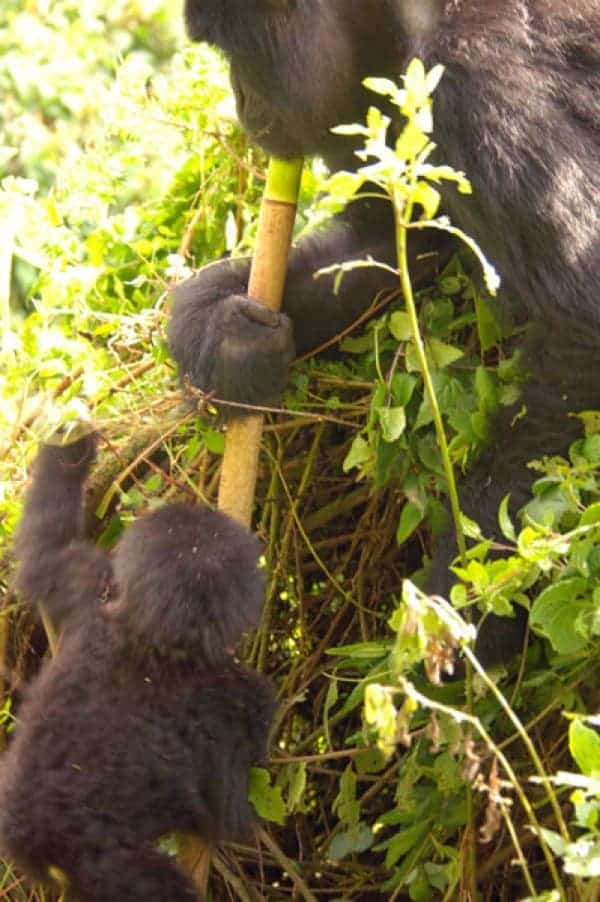While chimpanzees, which are our closest relatives sharing 98% of our genetic blueprint, are notorious for their widespread tool use, the same can’t be said about gorillas. The great apes have only been caught twice by researchers engaged in tool use. One used a stick to explore the depth of a muddy river and another turned a tree trunk to use it as a bridge. Finally we’ve got a third documented instance of gorilla tool use, and it’s most touching one too.

Deep in the Volcanoes National Park (Rwanda), an adult female was observed using a bamboo culm as a ladder for her offspring who couldn’t pass an obstacle otherwise. At first glace, the behavior might seem unintentional, however the researchers surprised the whole moment and saw that the mother reacted and came to aid with the makeshift ladder only after the offspring cried for help. When the infant gorilla grabbed the lowered pole, the mother then grasped it more firmly, which allowed the infant to scurry up to join her. Beautiful!
The findings were reported in the journal Behavioural Processes.
[NOW READ] Gorillas: more similar to humans than previously thought






